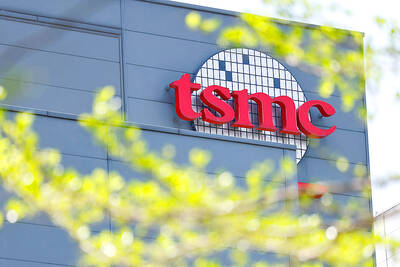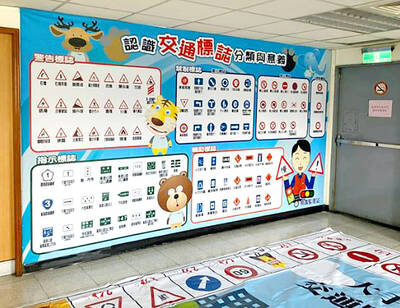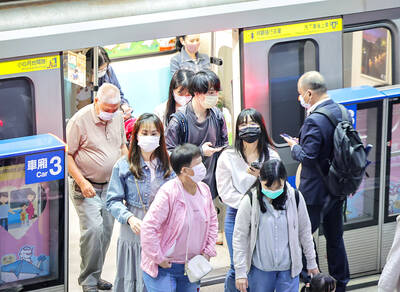US President Barack Obama took to the airwaves to promote his economic aid plan by emphasizing its benefits for average Americans: thousands of better schools, lower electricity bills and health coverage for millions who lose their insurance along with their jobs.
It was the latest appeal from the new president for a massive spending bill designed to inject almost US$1 trillion into the economy and fulfill campaign pledges.
As lawmakers consider an US$825 billion plan and Obama woos them with an eye toward a second economic package, he used his first radio and Internet address from the White House to update the public about his goals.

PHOTO: EPA/WHITE HOUSE
“Our economy could fall US$1 trillion short of its full capacity, which translates into more than US$12,000 in lost income for a family of four. And we could lose a generation of potential, as more young Americans are forced to forgo college dreams or the chance to train for the jobs of the future,” he said on Saturday in a five-minute address.
“In short, if we do not act boldly and swiftly, a bad situation could become dramatically worse,” he said.
Obama aides have refused to rule out that the administration would seek a second economic recovery plan — even before Congress approves the first — to patch an ailing economy.
Some are considering a sequel to assuage members of their own Democratic Party who fret that too little of the money is going toward public works projects that would employ their constituents.
Along with the speech, Obama’s economic team released a report designed to outline tangible benefits of the plan and shore up support.
Aides said they wanted people to understand exactly what they could expect if Congress supported the proposed legislation.
The US lost 2.6 million jobs last year, the most in any single year since World War II. Manufacturing is at a 28-year low and even Obama’s economists say unemployment could top 10 percent before the recession ends. One in 10 homeowners is at risk of foreclosure and the dollar continues its slide in value. On Friday, 1st Centennial Bank of Redlands, California, became the third US bank to fail this year.
The president and his top economic advisers met at the White House on Saturday to discuss economic issues.
The two-hour session focused on the proposed US$825 billion economic stimulus package that Congress is considering.
The group also discussed the upcoming federal budget, Obama’s first chance to shape the country’s spending.
A day earlier, Obama invited Democratic and Republican leaders to the White House to hear their ideas on the economy.
“We presented President Obama with our ideas to jump start the economy through fast-acting tax relief — not slow-moving government spending programs,” House Republican leader John Boehner of Ohio said in the weekly Republican address. “We let families, entrepreneurs, small businesses and the self-employed keep more of what they earn to encourage investment and create millions of new private-sector jobs.”
Boehner said the Republicans would cut taxes for every taxpayer, dropping even the lowest income tax rates.
“That’s up to an extra US$3,200 per family every year — money that can be saved, spent or invested in any way you see fit,” he said.
He also proposed a tax credit for home purchases, an end to taxation of unemployment benefits and tax incentives for small businesses to invest in new equipment and hire new employees.
Meanwhile, the Gallup Organization on Saturday said 68 percent of Americans approve of Obama’s performance in his first days in office. That’s a number near the high end for new presidents, but short of President John F. Kennedy’s 72 percent in 1961.
Gallup’s poll found that 12 percent in the survey disapprove of Obama’s job performance. That number is typical of all presidents.
The telephone interviews of 1,591 adults were conducted Wednesday to Friday. The margin of sampling error is plus or minus 3 percentage points.

EUROPEAN TARGETS: The planned Munich center would support TSMC’s European customers to design high-performance, energy-efficient chips, an executive said Taiwan Semiconductor Manufacturing Co (TSMC, 台積電), the world’s largest contract chipmaker, yesterday said that it plans to launch a new research-and-development (R&D) center in Munich, Germany, next quarter to assist customers with chip design. TSMC Europe president Paul de Bot made the announcement during a technology symposium in Amsterdam on Tuesday, the chipmaker said. The new Munich center would be the firm’s first chip designing center in Europe, it said. The chipmaker has set up a major R&D center at its base of operations in Hsinchu and plans to create a new one in the US to provide services for major US customers,

The Ministry of Transportation and Communications yesterday said that it would redesign the written portion of the driver’s license exam to make it more rigorous. “We hope that the exam can assess drivers’ understanding of traffic rules, particularly those who take the driver’s license test for the first time. In the past, drivers only needed to cram a book of test questions to pass the written exam,” Minister of Transportation and Communications Chen Shih-kai (陳世凱) told a news conference at the Taoyuan Motor Vehicle Office. “In the future, they would not be able to pass the test unless they study traffic regulations

‘A SURVIVAL QUESTION’: US officials have been urging the opposition KMT and TPP not to block defense spending, especially the special defense budget, an official said The US plans to ramp up weapons sales to Taiwan to a level exceeding US President Donald Trump’s first term as part of an effort to deter China as it intensifies military pressure on the nation, two US officials said on condition of anonymity. If US arms sales do accelerate, it could ease worries about the extent of Trump’s commitment to Taiwan. It would also add new friction to the tense US-China relationship. The officials said they expect US approvals for weapons sales to Taiwan over the next four years to surpass those in Trump’s first term, with one of them saying

‘COMING MENACINGLY’: The CDC advised wearing a mask when visiting hospitals or long-term care centers, on public transportation and in crowded indoor venues Hospital visits for COVID-19 last week increased by 113 percent to 41,402, the Centers for Disease Control (CDC) said yesterday, as it encouraged people to wear a mask in three public settings to prevent infection. CDC Epidemic Intelligence Center Deputy Director Lee Chia-lin (李佳琳) said weekly hospital visits for COVID-19 have been increasing for seven consecutive weeks, and 102 severe COVID-19 cases and 19 deaths were confirmed last week, both the highest weekly numbers this year. CDC physician Lee Tsung-han (李宗翰) said the youngest person hospitalized due to the disease this year was reported last week, a one-month-old baby, who does not